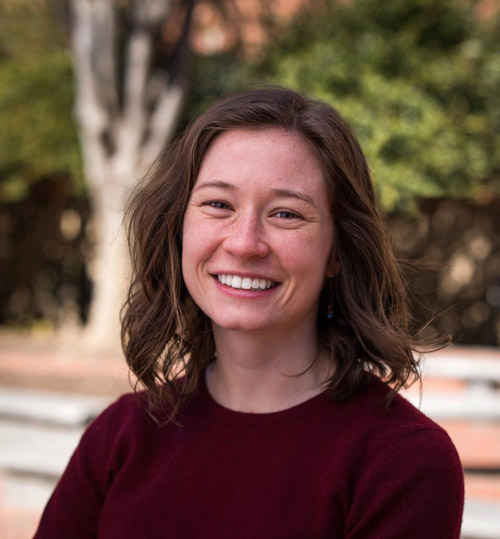Kaleidoscope Erika Bullock
4. Kaleidoscope
How do projects imagining a new direction for education take shape out in the world?

Erika Bullock, project manager at the Standford d.school
In 2015, Stanford University’s Hasso Plattner Institute for Design, commonly known as the d.school, launched the Stanford 2025 Project. Prompted by the explosion of online education and the rising costs of college in the U.S., educators and designers at the d.school began to ask: what could U.S. higher education and -- in particular -- students’ college experiences, look like in ten years?
To imagine possible futures, we first looked inward, asking Stanford students, faculty and staff about their experiences in higher education. The 2025 project emerged with four provocative ideas about the future of higher ed. These were ideas like Open Loop University, in which students loop in and out of their higher education throughout their lifetimes, leaving the university to pursue other opportunities and weave them together with their higher education journeys. Others, like Purpose Learning, imagine a future where students declare missions, not majors, when they enter college.
The response we received to Stanford 2025 was equally provocative. We heard from faculty, students, administrators and staff at schools across the country and around the world who were trying their own experiments. Some wanted to know how to implement structures like Open Loop at their home university, while others shared stories of building new colleges from the ground up. As we connected with these education leaders, we learned that there was much more to uncover about the future of higher education. A new question emerged: how, in reality, do projects imagining a new direction for education take shape out in the world?
Now, five years after the provocations from Stanford 2025, we’ve revisited the project with Stanford 2025: Uncharted Territory to answer that question and collect stories about some of the major players making change in higher education on the ground today. In the 12 case studies we collected -- through interviews with education entrepreneurs, faculty, administrators, college presidents, and students -- we saw parallels to Stanford 2025’s provocations, and many new ideas, too.
We heard from long-standing institutions like Georgetown University in Washington, D.C., whose Designing the Future(s) Initiative uses institutional building blocks -- like credit hours, course sequences, and modular course offerings -- to imagine a more flexible and responsive undergraduate curriculum. Talking with leaders at College Unbound in Rhode Island, we learned about the development of their student-centered college degree for adult learners, which offers support ranging from childcare to prior learning assessments, so that learners can comfortably fit a student identity into the rest of their lives. The Maharishi Institute in South Africa shared their story of educating students from backgrounds of trauma and poverty by flipping Maslow’s hierarchy of needs, placing self-actualization at the center of the curriculum: students begin every day with a meditation and yoga practice before diving into their studies. At Western Governors University, students move through a curated degree pathway completely online, and measure their progress in competencies, not credits. In the face of an uncertain future for higher education and its learners, these institutions are charting new paths forward.
The stories collected in Uncharted Territory are ideas that we think have pushed the envelope and encourage leaders within higher ed to imagine differently -- and we know our case studies are only a few examples out of many. We hope that Uncharted Territory continues an important and timely conversation, one that encourages education leaders to imagine boldly and build creatively a future of higher education for all.
To read more about Uncharted Territory, the case studies, and download a free copy of the PDF, check out the d.school website.
